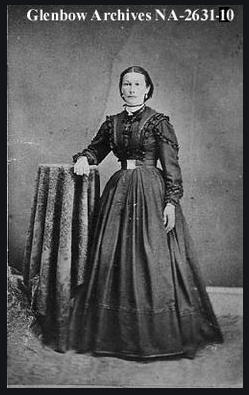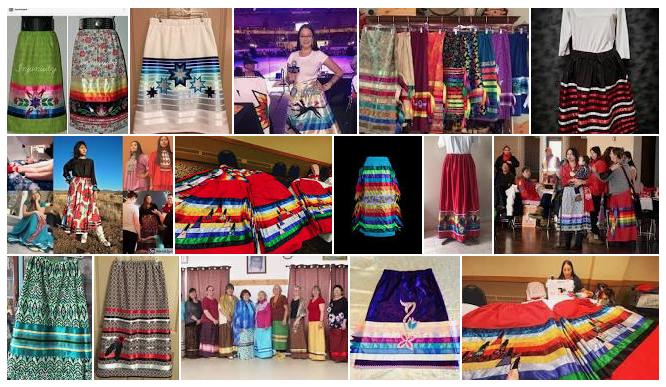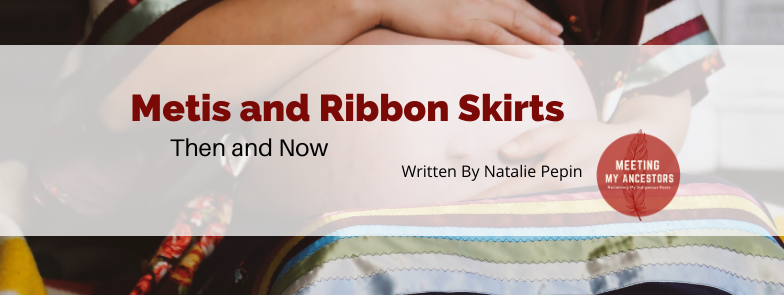Or ” The story of Cultural gatekeeping and the Ribbon Skirt”
I had a call this morning. I recognized the name on the call display before I picked it up. It was someone in one of my Facebook groups. I truly hadn’t interacted much with her and was curious why she might be calling me. It didn’t take long to realize it was a gatekeeping call.
I won’t get into too much on what gatekeeping means, I have another article on the topic. Suffice it to say, she was checking up on me. My background, where my people are from… making sure I’m Metis essentially. But more than that, she was wanting to discuss her view of what is Metis and what isn’t.
Now…she didn’t come right out and say these things and this was all cloaked in an interest in a program for mothers that I have coming up. But, if you spend enough time sharing cultural teachings, you get this type of interaction often and it becomes apparent for what it is quite quickly. If you check out my GateKeepers: Roles and Risks article, you’ll know I don’t feel that gatekeeping is altogether a bad thing. In fact, it’s important in many ways. It’s only when someone’s ego becomes enmeshed in the role, and they begin to feel that they alone can give approval of what is or isn’t Metis that it becomes problematic.
I don’t know if that was this person’s intention, it may have been and it may not have been. However, at one point, she indicated…ribbon skirts are not a Metis “thing” in her experience (though she did concede that pictures of Metis women in skirts with ribbons on them do exist).
I’ve heard this comment a few times now. Although there are photos of Metis women (for almost as long as there have been photos on Turtle Island) in skirts…with ribbons sewn along the bottom in rows, along the sides, in any which way they fancied, in archives everywhere, there is still this thought…”ribbon skirts aren’t a Metis thing”.
What I’ve discovered is, it’s the definition of what a ribbon skirt is that is problematic.
So, today, I’m going to enter a discussion with you. One that goes beyond “Metis didn’t wear ribbon skirts” or “yes, they did” (because that discussion gets old fast), and rather, we will focus on “what is a ribbon skirt?”, “where did they come from?”, “who wears them?”, and “why are they worn?”.
Where shall we start? At the beginning of course.
What is a ribbon skirt?
I want to get it out there before we get too far that modern ribbon skirts and those worn in the sepia photos from the 19th century are not exactly the same. The styles have shifted. Materials have changed. And, their meaning has in many ways evolved. The modern ribbon skirt is not what you find in pictures from the 19th century. They are a more recent trend for all nations. So we can be clear from the outset…I’m not going to make a case that Metis women in days past would be found wearing the modern version…no woman of that time would have. Not from any nation. Ribbon skirts, yes…modern ribbon skirts, no.
History
It isn’t a secret that trade with Europeans changed much about life on Turtle Island (for those who aren’t from here, this is a name used for North America, as our continent looks like a turtle and it’s a part of the creation story of certain nations).
Before trade began, things like the tiny glass seed beads, which adorn so much “traditional” art, were not seen here. Those tiny glass beads came from Europe. And, many aspects of the skill of modern applique beadwork also come to us through that new relationship. That’s not to say beadwork didn’t exist here prior to first contact. It did. But it wasn’t the same. It wasn’t always the rainbow of colours that we see today, and the materials used were different. (traditional is in quotations as what is traditional depends on the era that we are looking at, what was traditional in the 18th century and what was is called traditional from the 20th centuries will often be different).
This same shift was seen in the materials that clothing items were made with because of the introduction of woven cloth products. We call them trade cloth. Melton, broadcloth, linen and eventually cottons.
These fabrics gradually replaced the use of hides in making things like dresses and skirts. And, availability of such fabrics was one of the reasons that European fashions became prevalent (though this is definitely not the whole story).


Within the Metis Nation, women tended to have a European fashion sense and wore moderately full, pleated dresses or skirts. Tending towards the modest, long sleeves were common in most weather. You can see some more points about Metis clothing here http://firstpeoplesofcanada.com/fp_metis/fp_metis5.html.
The skirts were adorned with yet another early trade product…ribbons. Coloured ribbons were a simple way that skirts, dresses, and even blouses were decorated. Fabrics used were often simple, and also were quite often dark coloured.
Adding a row or two, or even three, of ribbon at the bottom of a dress or skirt wasn’t uncommon. This was a part of the evolution of our clothing over time and it was one of the means of artistic and personal expression that Metis enjoyed in their role as the family seamstress.
Here are some examples of dresses or skirts with ribbon trim (from archives across the internet…specifically the Glenbow)


This painting by Peter Rindisbacher depicts a Metis family (a man and his two wives…yes…two). What is one of the women wearing…a ribbon skirt? You can read more about the clothing in this painting by reading Sewing ourselves together : clothing, decorative arts and the expression of Metis and Half Breed identity by Sherry Farrell Racette. This skirt is a testament to the blended European and Indigenous fashions worn by the Metis. Including, the use of ribbons on clothing items such as leggings (mitasses) and skirts.

So, clearly, Metis women wore skirts….with bands of colour and ribbons on them. Ribbon skirts.
BUT WAIT! (I can hear the gasps of indignance from here) THAT’s not what a ribbon skirt is! Modern ribbon skirts, with ribbon skirt teachings, and bright colours, with unlimited rows of rainbow ribbons and applique cut outs of mountains and horses…and….and…
Yes. This is true. Ribbon skirts have evolved! Just like our clothing evolved over the hundreds of wear before today, ribbon skirts have also.
The modern ribbon skirt isn’t just a piece of clothing (though they absolutely can be worn as an every day piece of clothing), ribbon skirts are now symbols of our identity as Indigenous women.
A quick Google search yields a colourful display…

Ribbon skirts have multiple facets today. They can be political statements as you will see in this article by Kelly Anne Smith in the Anishinabek News (http://anishinabeknews.ca/2018/01/31/the-ribbon-skirt-symbol-of-surviving-cultural-genocide/) describes ribbon skirts as a symbol of resistance and surviving attempted cultural genocide. Ribbon skirts have taken on a spiritual significance as they are often worn in ceremony.
Ribbon skirts can have a meaning of strength and connection to the earth.
Do these ribbon skirts look the same as those worn in the 19th century….well no. And, they don’t have to. Our lives have changed. Our cultures are not dead relics of the past. We are alive today and so are our nations. Our Metis culture continues to serve us and have meaning for us on the 21st century as much as it did in the 19th century.
And in the 21st century….yes…Metis women wear ribbon skirts.
“But is it okay for me to wear one? I’m not First Nations…I’m Metis” I’ve heard this a lot. It is a remnant of the shame of our past. The feeling of not belonging that so many of us have experienced. And, if you’ve ever wondered this same thing, you aren’t alone.
Other knowledge keepers are asked this also. You’ll see the reply of Auntie Manda in her post to WeRNative.org (https://www.wernative.org/ask-auntie-questions/can-metis-people-wear-ribbon-skirts-or-is-it-disrespectful) where she explains that ribbon skirts have no one tribal affiliation. You don’t have to be from one nation or another to wear ribbon skirts.
In fact, you will find accounts of Metis women everywhere connecting with their identity as Indigenous women, and wearing ribbon skirts as a part of that identity.
Dear Metis woman…You are allowed to wear ribbon skirts. Our ancestors did. And we do too. For different reasons it’s true. In different styles, yes. They are a part of our living identity today as Metis people. We don’t all live in cabins in the woods, living a simple country life tanning hides and picking berries anymore (well, I still do…but it’s not necessarily connected to our modern identity anymore) as our lives have evolved, though firmly rooted in our traditions and our history. So have our skirts.
Please excuse me…nikosis (my son) turns one today and it’s time to make his dinner and get the cabin ready…including putting on my ribbon skirt 😉
Want to read more about ribbon skirts?

